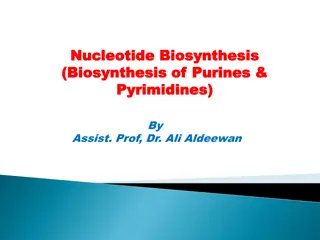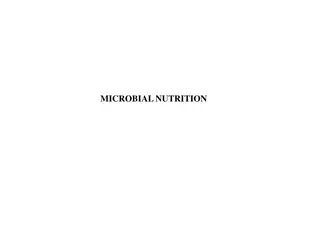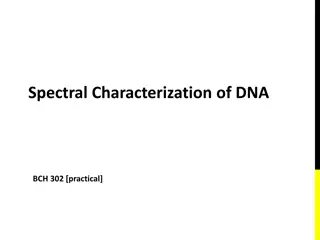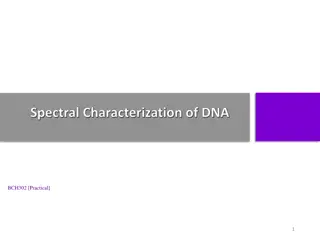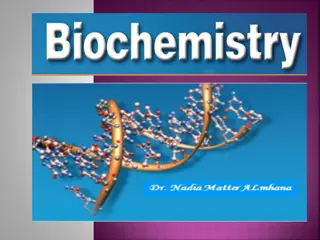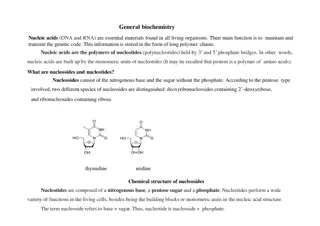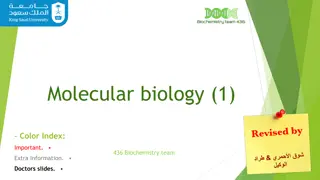Understanding Nucleotide Biosynthesis and Nucleic Acids
Exploring the biosynthesis of purines and pyrimidines, essential components for DNA and RNA structures. Delve into the world of pyrimidines, purines, nucleosides, nucleotides, and adenosine derivatives like AMP, ADP, ATP, and cAMP, crucial for various biological processes. Unravel the significance o
5 views • 44 slides
Understanding Microbial Nutrition and Growth Factors
Microbes require carbon for metabolic activities, with organisms categorized as heterotrophs or autotrophs based on their carbon source. In addition to carbon, macronutrients like nitrogen, phosphorous, sulfur, potassium, and magnesium are crucial for cell function. Growth factors such as amino acid
0 views • 15 slides
The Intriguing Structure and Functions of DNA
DNA, or Deoxyribonucleic Acid, is a fundamental molecule in living organisms, characterized by its double helical structure consisting of two antiparallel polynucleotide chains. Each strand is composed of nucleotide monomers, comprising deoxyribose sugar, phosphate group, and nitrogenous bases (puri
0 views • 12 slides
Understanding DNA Structure and Denaturation Process
DNA is a double helical structure made of 2 antiparallel polynucleotide chains with nucleotide monomers. The structure contains deoxyribose sugar, phosphate groups, and nitrogenous bases (purines and pyrimidines). Hydrogen bonds between base pairs stabilize the structure. Denaturation can occur due
0 views • 16 slides
Understanding the Structural Elements of DNA in Molecular Biology
DNA, the genetic material of living organisms, consists of two antiparallel polynucleotide chains forming a double helical structure. Each chain is composed of nucleotide monomers, consisting of deoxyribose sugar, phosphate group, and nitrogenous bases (purines and pyrimidines). The backbone of DNA
0 views • 17 slides
Understanding DNA Structure and Genetic Information Encoding
Complementary nitrogenous bases in DNA, pyrimidines (thymine, cytosine) and purines (adenine, guanine), store biological information through antiparallel strands. DNA, with non-coding regions, undergoes replication and transcription to RNA for protein synthesis. Nucleic acids, DNA, and RNA are cruci
0 views • 7 slides
Understanding Nucleic Acids: DNA, RNA, and Nucleotides
Nucleic acids, essential for all organisms, store genetic information as long polymer chains of nucleotides. Nucleosides contain bases and sugars, while nucleotides include a phosphate. Purines and pyrimidines are the aromatic bases in nucleotides, with DNA having A, G, C, T and RNA having A, G, C,
0 views • 10 slides
Understanding Nucleic Acids and the Central Dogma of Molecular Biology
In molecular biology, understanding nucleic acids like DNA and RNA is crucial for comprehending the central dogma, which explains the flow of genetic information from DNA to RNA to proteins. Nucleic acids are polymers of nucleotides, composed of pentose sugar, nitrogenous bases, and phosphate groups
0 views • 18 slides
